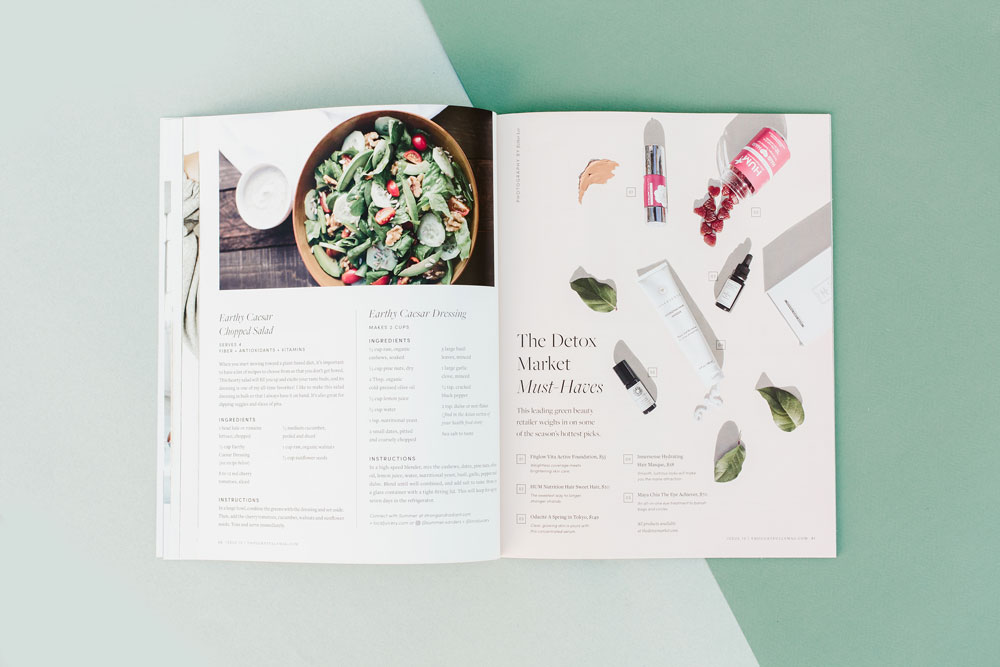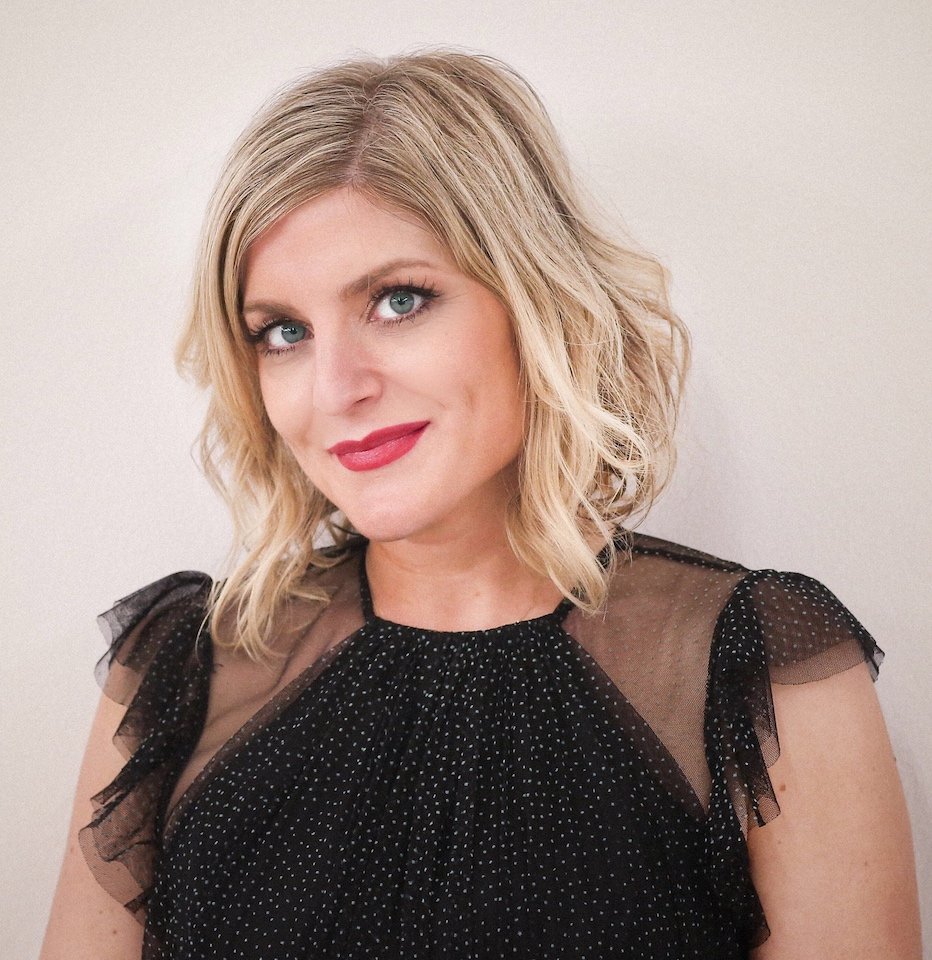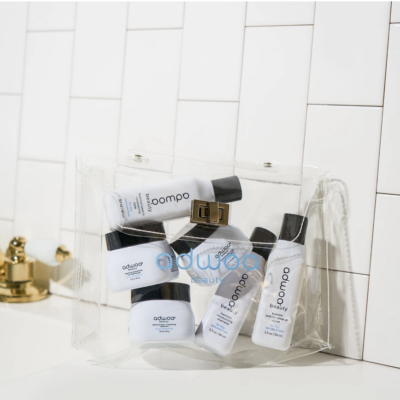
Thoughtfully Magazine’s Brandie Gilliam On Inspiration, Inclusiveness And What’s In Store For Her Publication
Brandie Gilliam’s grueling go-to-market plan for a new wellness-focused print publication was quickly scrapped when Whole Foods came calling. After four whirlwind months, Thoughtfully Magazine was on the grocer’s magazine racks nationwide in January 2015. Three years later, Thoughtfully added Anthropologie to its extensive list of stockists that includes Sprouts, The Detox Market and Barnes & Noble. “Thoughtfully is a word that’s been around, but, since we’ve been on newsstands, you see now the that word is being implemented in people’s messages like never before,” says Gilliam. “Thoughtfully has become a staple and a part of culture in how we approach life. That’s my goal with how we move forward with Thoughtfully.” Beauty Independent talked to Gilliam more about moving forward with the publication and her career, editorial pitches that appeal to her, beauty ingredients that don’t and the factor in Fenty Beauty’s success that doesn’t have to do with Rihanna.
What content is most popular with Thoughtfully readers?
While [green beauty] is a big part of our content, the wellness, self-care and, more so, that thought process in terms of really learning how to take control over your thoughts and your mind, those are probably what’s most popular for us here at Thoughtfully, and where our readers turn to us to help guide them in.
There’s so much discussion about natural, clean, green or non-toxic beauty. What’s Thoughtfully’s stance on the terminology to use?
The terminology debate is really interesting. Historically, the green beauty conversation has had to take place online. We’ve had to hone in on certain keywords, honestly, for SEO purposes. That’s why you see the keywords “clean beauty,” “organic beauty” and “natural beauty” being used and, many times, overused. It was a way to draw a potential customer to a site. In print, we’ve got a little bit of leeway. In our articles, we can touch on all of the keywords.
The premise of Thoughtfully is giving more thought to how we’re moving through life. In terms of ingredients, are those ingredients the most nourishing, the best for you and the best for the environment? We talk to things from that angle. We’ll use terminology like green, natural, organic and non-toxic. I’m not going say that there is a right or wrong way. Everybody may have a different connotation that comes to their mind if they hear clean, green, natural or organic. The bottom line is: Do you know what’s in your products? Are you reading those ingredient labels?
Do you have rules about what products you’ll cover in Thoughfully?
We have a very stringent ingredient policy. Those are the well-known toxins. For instance, we stay away from any type of sulfates, glycols, aluminum, formaldehyde. We love EWG and what they’re doing with the resources that they provide. We also pay attention and research in terms of how the products are being made.
There are brands I turn down all that time that I get pitched. These particular products are not clean whatsoever. It’s a big stretch to even try to put them in the natural beauty world. [A brand that] has a whole bunch of harmful synthetic chemicals in their product does not substantiate that the product is clean by trying to slap in shea butter at the very end.
That’s where the education comes in. Have you looked past that messaging? Really take a look at that ingredient label and learn what to look for, so you’re not being lured in. You want to have a product that’s good at driving results and working with your body. The more plant-based ingredients that are in there, the better.

Which beauty brands really nail it?
I’ve been doing this too long. It’s going to be 16 years that I have been using only non-toxic products. Three brands that I think really set the bar [are] Dr. Hauschka, Weleda and Dr. Alkaitis. Sixteen years ago, those were the brands that I got my hands on. Brands that I’ve discovered along the way that I absolutely love are May Lindstrom, Josh Rosebrook and One Love Organics. Laurel [Whole Plant Organics] is also a favorite of mine. My list could really go on. In makeup, it’s been amazing to watch Au Naturale and Alima Pure. Again, that list could really start to get long.
How do you like brands to reach out to Thoughtfully?
If we’ve got an established relationship, they just know how to get right to the punch. They know what we’re looking for as editors. They know how to present a product. They’ve got a new product or, even if they want us to revisit a current product that they’ve had for a while, they know how to highlight the star ingredients or benefits. What’s it good for? They know how to package it in a few lines, and they give me great imagery.
It turn us off when they’re pitching for editorial, but the tone and voice feels all about the brand. Our number-one concern is our readers. What’s going to be beneficial for [them]? Pitch me in a way where I can easily connect you and our readers. As opposed to, “We’re launching a new product,” or “We have a new brand, and we want you to help us make it successful,” why would our readers would be interested? That’s where a lot of brands have missed when they’re pitching editorial.
They’re not pitching in terms of their expertise and what sets them apart. I recently got pitched by a brand, and it was such an easy process. Instead of presenting their founder and beautiful products, they went a step further and said, “Hey, this is what our founder can talk on with you, and here’s the real story.” They had already fleshed it out for me. As editors, we’re so busy. We’ve got so many things that we’re balancing, so she pitched it in just the right way where it got my attention. I could see where the story could go and what it could be.
This industry is getting more and more competitive. It’s just not enough to be non-toxic and have beautiful packaging anymore. There’s such oversaturation. I need to know performance, bottom line.

How do you navigate advertising and advertorials in Thoughtfully?
We’ve got a mix of editorial [and] advertorial partnerships. We’re always looking for great editorial. We do the advertorial when brands come to us, they meet our ingredient standards, [and] it feels like a match on our end. They have a specific thing they’re wanting, a certain campaign or a certain strategy that they’re wanting us to be a part of. That’s different from advertorial when they dictate the message.
We do a lot of custom [to] understand what our partners are looking to drive and do. We’re really great at putting together beautiful creative, both in print and digital. We’ve done things with partners like The Detox Market. We helped them launch their first ever lookbook. We were able to apply our publishing expertise to our partner and take the partnership beyond just being in Thoughtfully to their customers, but in a personalized way. It’s under their brand, but it’s collaborating with us and leaning on our expertise in that area. It’s a really smooth and seamless process, but it drives big results.
Tell us more about working with The Detox Market. How did that come about?
The relationship started last year as I began to talk with Romaine [Gaillard, founder of The Detox Market] and get to know him further. They immediately loved what we were doing at Thoughtfully. They were an advertiser and a conversation began [about], “How can we take this a step further?” They wanted to go bigger. Within a month, we’re rocking and rolling.
They don’t necessarily have print or lookbook capabilities in-house, or they do, but are so tied up with so many other things that [they] would like for [us] to come along and bring that editorial angle. It wouldn’t look like any other catalog or lookbook out there. It has an editorial edge. It gives their customer added value because they’re not just getting the product and the price. They get bonus content.
The Detox Market is one of my absolute favorite partners to work with because [of] the trust that they have. They trust that we know what we’re doing. I trust that they know what they’re doing, and we bring our expertise together. So, we’re able to rollout a really beautiful, but effective tool for growing their business.
Is that something that Thoughtfully would like to do with other partners?
Yes, definitely. As I was doing it, I was in my sweet spot. We’ll be continuing to do their lookbooks this year, and it’s something we would love to do for other brands.
How does inclusiveness look in practice in Thoughtfully?
It goes back to thoughtfulness, mindfulness, being aware. When I say, “Our target demographic is women 25 to 40,” that comes in a lot of variations. We come in different shapes, sizes, shades, backgrounds. Even when I mention 25 to 40, there’s different ages in there. When we’re looking at this magazine, how do we not get so blinded by our personal spheres? So, when we’re putting something together, it [has to] occur to me [if] I’m only actually showing one type of woman.
I’d like to be even more inclusive, but I’ve only got 68 pages. Depending on the imagery, you can’t touch everybody, but I always say, “It’s the intention in the heart.” People will feel that. People will feel if it starts to look biased and feel a little elitist.
Where is the work on inclusivity still not being done in the indie beauty and wellness community?
You’ve got brand owners who will say, “We don’t do it because the business doesn’t substantiate it. Therefore, we’re not going to make a product for darker skin tones if darker skin tones aren’t buying it.” I may not agree with that side, [but] I can understand it. One of the things I would say [is], “Truth be told, as a woman of color, if all I’m seeing are pictures of very pale-skinned individuals, then, I’m not even thinking that you’ve got something for me.” The buying power of people of color is huge, especially when it comes to the beauty industry.
One of the things people of color are very particular about [is] performance. There is an evolution of mindset that occurs to start to be open to using natural products. Particularly with people of color, you cannot lead with the fact that it’s natural. That is not enough to open the door. We need to know that it works well, that it’s a great color match. Those things, to me, are signs of successful brands. You lead with what it’s going to do. The other items are secondary.
There’s definitely room to be able to tap into this wonderful audience and to better serve them because they are looking for products that will be good for them and work well. There’s only a handful of brands that I can think of that even have darker skin tones. Most brands do not.
The founder of Clove + Hollow has said that some of the brands that actually do darker skin tones still aren’t addressing undertones.
This is incredible to me. Obviously, we’ve got to look at this particular case study a little differently because it’s Rihanna, but, you saw the response to Fenty Beauty. She got it. She paid attention to us. She got the different undertones and the different shades, and it felt [more] multifaceted than the brand coming out with the typical tan, almond, chestnut and maybe another darker shade, if that.
We are so multi-dimensional and so multifaceted. [It’s about] not only African-American people of color, [but people] from the Middle East and India. It’s really important that we start to open that up. In America, it is such a melting pot in terms of colors and shades. Women are waiting and hungry to be seen and to be heard.
What are beauty, health and wellness trends that you see rising?
More research-based [products]. For so long in the natural market, we’ve presented it more as experience-based. That hasn’t been that satisfying for readers or customers, especially the savvy ones, because they’re just not seeing or understanding why. [They may not be in a] predicament where [they have] some ailment or extreme situation that is causing [them] to have to switch. So, [it’s important to] really walk through that process [and] move into where we can get research-based data behind it.
Something that I’m interested in seeing, especially being here on the West Coast, is the use of cannabis in skincare. The debate is still there: How effective is it in terms of skin care? What is it really going to do for the skin? That’s an interesting one. We’re also seeing seasonal approaches to skincare and curating a ritual around skincare.
What are goals for Thoughtfully going forward? Do you want to do this forever?
The goal is that Thoughtfully would grow into one of the leading voices when it comes to wellness and self-care. I’m amazed at how we’ve been able to do that in three years as an indie brand. Also, [building on] this idea of living thoughtfully and our hashtag #livethoughtfully. [At] the onset, we’ve talked about being this community, this movement. We’re going to see that much more entrenched [in] the coming years. I’m excited to see how that gets to be done through different partnerships.
In terms of continuing to still do it, yes, I absolutely love it. I can totally see myself doing it five to 10 years later. Our team will continue to expand. It’ll be really cool to see it throughout, not just the U.S., but other countries.

Is Thoughtfully self-funded? Would you be interested in taking on investors?
To date, Thoughtfully has been self-funded. It is completely debt-free. I’ve been very conservative and strategic so that we can run that way. We’re able to do it in a way where we grow organically as opposed to a high-growth model. It’s all about knowing what you’re working with.
At this point, we would certainly be open to investors and the right group to take Thoughtfully further. I get excited about where Thoughtfully is going to go in the future and who’s going to help take us there.
How much did it cost to get Thoughtfully launched?
About $30,000 to $50,000.
You’re an inspiration to many people. Who inspires you?
I have a list of people that inspire me, but there are a few that come to mind: a woman named Christine Caine and a guy named Steven Furtick. Brené Brown is a great author that I go to as well as a gentleman named John Gray. From a creative standpoint and business standpoint, I love listening to Jenna Kutcher, Lewis Howes. “Judgment Detox” author Gabby Bernstein speaks, [and] I’m like, “Oh my gosh, can we talk about that?”
I find it all starts within. As an individual, I can say that I know how to not let my thoughts control me. Does that mean that I never have a negative thought? No. I’ve learned the tools to not stay in that space. Those are areas that I’ve learned more about than I ever did growing the business.




